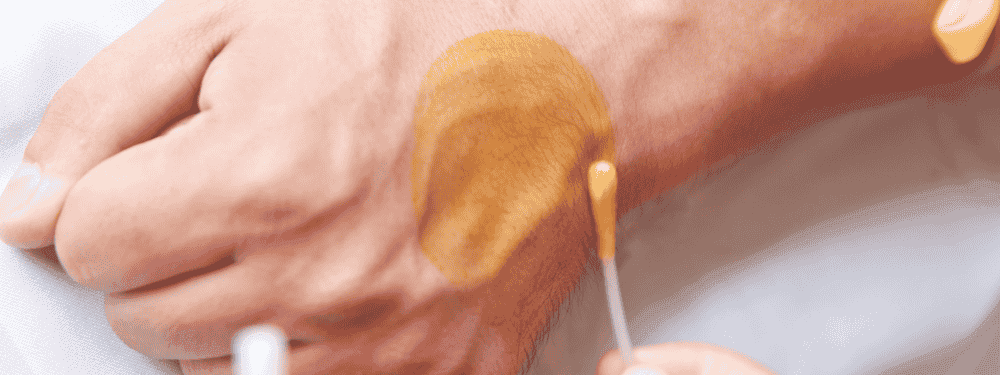For better or worse, TikTok has become a primary resource for people of all ages looking for skincare guidance.
As such, a lot of claims generate thousands, if not millions, of views, even though the evidence to support them is minimal or nonexistent. In some cases, the advice can even be harmful.
This is one of those instances.

In a barrage of videos, influencers have been touting over-the-counter antibacterial cleansers containing chlorhexidine gluconate (CHG) – which are traditionally used to prep a patient’s skin before surgery – as a miracle treatment for a host of skin conditions, including razor burn, ingrown hairs, back acne, eczema, and body odor.
While cleansers that contain CHG do effectively kill the microbes that can cause some common skin issues, they may also give you a bad rash and impair your skin’s ability to fight infections, among other potential side effects. In very rare cases, CHG can even cause deafness or blindness if used near your ears or eyes or trigger anaphylactic shock.
Whether you’re looking to treat a specific skin issue or you’re simply trying to practice good hygiene, antibacterial products are rarely the answer.
Antibacterial ingredients are generally overkill
The reality is that antibacterial ingredients are often overkill.
A chemical called triclosan was once one of the most common ingredients in antibacterial cleansers, including liquid hand soaps. That changed in 2017, when the Food and Drug Administration (FDA) issued a ruling “determining that certain active ingredients in over-the-counter topical antiseptics [including triclosan] used in health care settings are not considered generally recognized as safe and effective due to insufficient data.”
The FDA had determined that not only was there no evidence supporting the use of triclosan in such products, but it appeared, in some studies, that high-dose triclosan was associated with thyroid hormone abnormalities.
CHG can be problematic because it binds to the outermost layer of skin and continues to exert its antimicrobial effects for up to six hours after application. This, of course, is ideal for surgical procedures that can take several hours. But this high potency increases the risk of negative side effects, which range from dry skin to severe (though rare) and potentially fatal allergic reactions.
Repeated use can reduce the amount of good bacteria on your skin and contribute to antibiotic resistance. It could also cause folliculitis, acne, rosacea, and other skin conditions. In other words, it can cause the very same skin issues that influencers are claiming CHG can solve.

Safer, more effective options
If disinfection and reducing unwanted bacteria are qualities you’re interested in, the good news is that there are a host of widely available over-the-counter products that are affordable and much gentler on your skin.
Products containing hypochlorous acid, salicylic acid, and benzoyl peroxide are all better options for treating dermatitis, folliculitis, body odor, and many other common skin conditions because there’s a mountain of research supporting their effectiveness. They’re also much less likely to damage your skin’s microbiome.
Benzoyl peroxide, in particular, works to kill bacteria without causing drug resistance. Its main drawback is that it can be irritating. If it’s dried out your skin before, look for a formula with a concentration around 2.5% instead of the more-common 5 to 10%.
There is a time and place for products containing CHG – a dermatologist may recommend it as a short-term treatment for severe folliculitis, severe cysts, or hidradenitis suppurativa – but it’s not something that should be included in your daily skincare routine.



 Can You Use Body Moisturizer on Your Face? Yes, But …
Can You Use Body Moisturizer on Your Face? Yes, But …